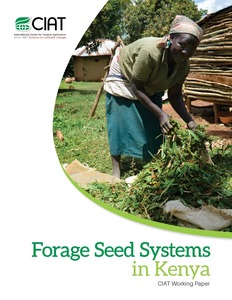Assisting community management of groundwater: irrigator attitudes in two watersheds in Rajasthan and Gujarat, India
The absence of either state regulations or markets to coordinate the operation of individual wells has focussed attention on community level institutions as the primary loci for sustainable groundwater management in Rajasthan and Gujarat, India. The reported research relied on theoretical propositions that livelihood strategies, groundwater management and the propensity to cooperate are associated with the attitudinal orientations of well owners in the Meghraj and Dharta watersheds, located in Gujarat and Rajasthan respectively.
Business models for fecal sludge management
On-site sanitation systems, such as septic tanks and pit latrines, are the predominant feature across rural and urban areas in most developing countries. However, their management is one of the most neglected sanitation challenges. While under the Millennium Development Goals (MDGs), the set-up of toilet systems received the most attention, business models for the sanitation service chain, including pit desludging, sludge transport, treatment and disposal or resource recovery, are only emerging.
Energy recovery from domestic and agro-waste streams in Uganda: a socioeconomic assessment
Recovering energy from waste offers dual benefits – a) improved waste management, and b) provision of reliable energy to households, institutions and commercial entities. In this report, we present a socioeconomic assessment of three energy business models (briquette manufacturing, on-site (public toilet) energy generation, and agro-waste electricity generation) based on feasibility studies carried out in the city of Kampala, Uganda.
Experiences from stakeholder dialogues in Tamale, northern Ghana
Tamale is the capital city of Ghana’s Northern Region. As the regional capital, Tamale is growing rapidly – the population has almost tripled to over 370,000 in the past 30 years, and the areal extent has increased up to sevenfold in the same period. Urban agriculture is an integral part of the food system, linked to resource management and spatial planning. In general one can say that backyard farming flourishes, but more formally organised production is threatened by urbanisation.
Household opportunity costs of protecting and developing forest lands in Son La and Hoa Binh Provinces, Vietnam
Vietnam has pilot-tested a payment for forest environmental services (PFES) program in an effort to restore and protect forest areas, some of which have been severely degraded by the excessive cutting of trees by small-scale farmers planting annual crops on steep, sloping lands. The pilot program implemented in southern Vietnam seems to be successful, yet the program in northern Vietnam has not produced the desired rates of planting and maintaining forest areas.
Increased water charges improve efficiency and equity in an irrigation system
Conventional wisdom in many agricultural systems across the world is that farmers cannot, will not, or should not pay the full costs associated with surface water delivery. Across Organisation for Economic Co-operation and Development (OECD) countries, only a handful can claim complete recovery of operation, maintenance, and capital costs; across Central and South Asia, fees are lower still, with farmers in Nepal, India, and Kazakhstan paying fractions of a U.S. penny for a cubic meter of water. In Pakistan, fees amount to roughly USD 1-2 per acre per season.
Land use and agricultural change dynamics in SAT watersheds of southern India
Impact of dynamic land use and land cover changes on the livelihood of local communities and ecosystem services is a major concern. This is particularly evident in most dryland agricultural systems in South Asia. We study land use/land cover (LULC) changes over the last two decades in a watershed (9589 ha) located in semi-arid eco-region in South India (Anantapuram district) using Landsat and IRS imagery. We captured additional data through field observations and focused group discussions.




